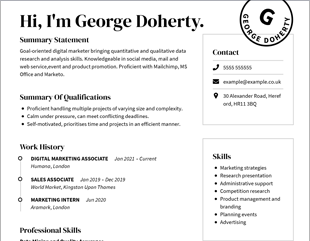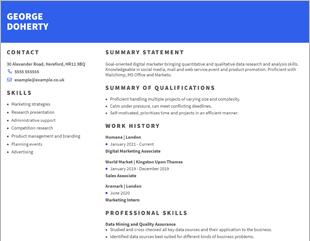CV Examples for Scholarship to Help You Succeed This Year
A CV example for scholarship lays out your case for potentially gaining a scholarship. How do you write the best scholarship CV possible?
A CV example for scholarship lays out your case for potentially gaining a scholarship. How do you write the best scholarship CV possible?





OUR USERS HAVE BEEN HIRED BY
When you apply for a scholarship, there are many different steps you might have to take. Oftentimes, when you submit a scholarship application, you’ll also submit a scholarship CV. A university scholarship CV works slightly differently than a traditional CV, but the general process is very similar. Here’s what you need to know about writing a scholarship CV that scholarship committee members will actually be interested in reading.
There are many scholarships that might benefit from a CV – here’s just a few of them:
Whether or not you need a professional CV, however, typically depends on the specific scholarship you’re applying for. Some selection committees use CV, while some request only personal mission statements or another type of form. Just check to see whether the application requests a “scholarship CV” or “student CV”.
Tips for creating your scholarship CV
Typically you’ll need to submit a cover letter alongside your scholarship CV. Check the information about your specific scholarship to see exactly what documents the scholarship committee wants to see from you, and make sure you include only those documents and all of those documents. The cover letter is your opportunity to showcase even more detail as to why you’re deserving of the scholarship in question.
It’s typically recommended that you submit to as many scholarships as possible. Even if you don’t meet the exact criteria, the worst that can happen is that the scholarship committee turns down your CV. Above all, avoid exaggerating or lying about your achievements. Lying on your scholarship CV could lead to losing the things you’re bragging about, including leadership roles and even a position as a student at university.
Yes. You should make sure you’re tailoring your scholarship CV to each individual scholarship so that you’re more likely to meet what the organisation is looking for. Essentially, you’re looking for CV keywords in the scholarship posting, specifically skills and prerequisites that the scholarship demands. Address those requirements in your own CV.
We personalize your experience.
We use cookies in our website to ensure we give you the best experience, get to know our users and deliver better marketing. For this purpose, we may share the information collected with third parties. By clicking “Allow cookies” you give us your consent to use all cookies. If you prefer to manage your cookies click on the “Manage cookies” link below.